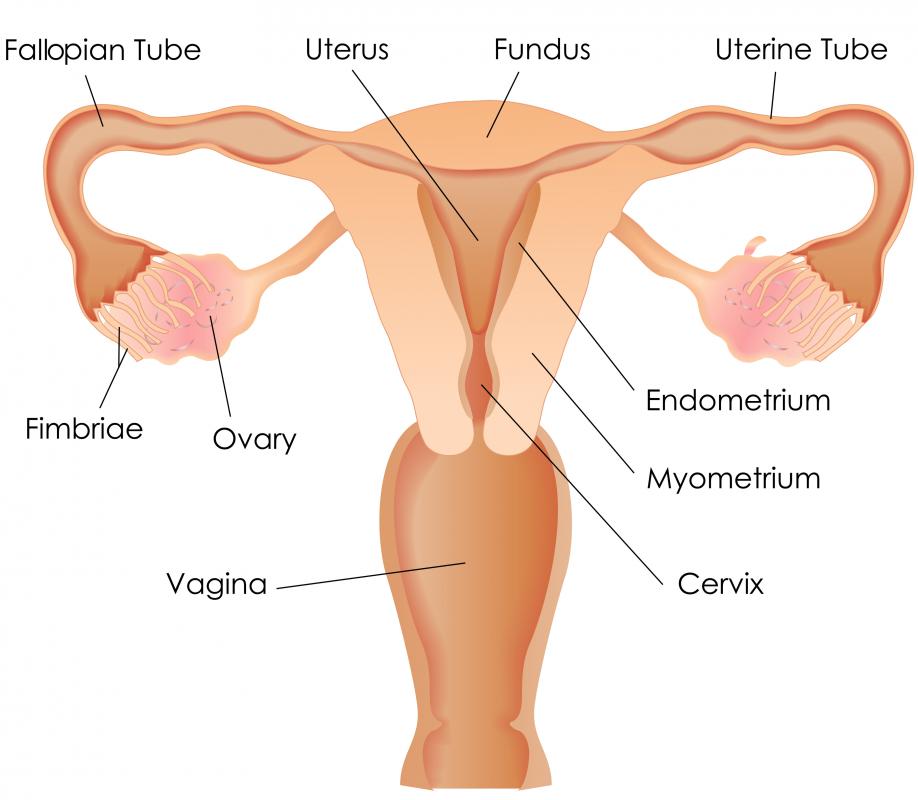At WiseGEEK, we're committed to delivering accurate, trustworthy information. Our expert-authored content is rigorously fact-checked and sourced from credible authorities. Discover how we uphold the highest standards in providing you with reliable knowledge.
What is Squamous Dysplasia?
Squamous dysplasia, also known as cervical dysplasia, is the abnormal development of the cells that line the cervix. Considered a precancerous condition, squamous dysplasia may be triggered by a variety of factors. Treatment is dependent on the grade of the dysplasia and may involve either the destruction or removal of the affected tissue. Prognosis associated with cervical dysplasia is dependent on a timely diagnosis and appropriate treatment. If left ignored, squamous dysplasia can develop into cervical cancer.
Cervical dysplasia is most commonly caused by the presence of the sexually transmitted infection known as human papilloma virus (HPV). Generally, a woman’s immune system is able to neutralize the virus and prevent the infection from progressing. In some women the presence of HPV may adversely affect the development of cervical cells, leading to dysplasia, and, ultimately, cervical cancer. Squamous cell carcinomas are considered to be the most common form of cervical cancer resulting from the presence of HPV.

Women who develop squamous dysplasia may remain asymptomatic, meaning they experience no symptoms at all. For some women, the presence of precancerous cells may induce abnormal vaginal bleeding, pelvic discomfort, or a vaginal discharge that is watery or bloody with a foul odor. Abnormal cervical cells that produce no symptoms are generally detected during a routine Pap smear.

When abnormal squamous cells are detected, additional testing is usually performed to evaluate the extent of cell development. Individuals may undergo a cervical examination, known as a colposcopy, which involves the use of a colposcope to evaluate the condition of the cervix. If abnormalities are detected, a biopsy may be conducted to remove a sample of the abnormal cells and surrounding cervical tissue for further laboratory analysis. The biopsy may be performed as either a punch or cone procedure, necessitating either the circular or cone-shaped excision of cervical tissue respectively.

After a determination of cancer has been made, further testing may be conducted to determine the staging of the condition. A physical examination of the bladder and rectum may also be performed, as well as imaging testing, including magnetic resonance imaging (MRI) and computerized tomography (CT) scan, to evaluate whether the cancer has metastasized, or spread, to surrounding tissues or organs. If the cancer remains noninvasive and confined to the cervix it may be given a staging of either zero or one. Stages two and three are given when the cancer has spread to the uterus and pelvic wall respectively. A staging of four is assigned to those cancers that are invasive and have metastasized to surrounding organs, such as the bladder or lungs.

Cancers determined to be noninvasive and confined to the cervix may be treated with a variety of procedures. During a loop electrosurgical excision procedure (LEEP), an electrical current is passed through a wire loop that is utilized as a knife to excise cancerous cells from the cervical opening. Cancerous cells may be frozen and eliminated during a procedure known as cryosurgery. Additional procedures include the use of conization, which is the conical-shaped removal of malignant cells with a scalpel, and laser surgery to eliminate cancerous cells.
Invasive cancers affecting the deepest layers of the cervix may necessitate a hysterectomy. Considered a major surgery, a hysterectomy requiring the removal of the uterus and cervix is known as a simple hysterectomy, whereas the additional removal of part of the vagina and surrounding tissues is called a radical hysterectomy. Women who undergo a hysterectomy may also require the administration of radiation and chemo therapies to eliminate any residual, cancerous cells. Radiation therapy utilizes high-powered, finely focused beams of energy to target and eradicate malignant cells and may trigger side effects that include fatigue and inflammation at the administration site. Chemotherapy involves the oral or intravenous administration of anti-cancer drugs and may induce nausea, vomiting, and fatigue.
Individuals who undergo treatment for invasive cervical cancer consequently become infertile. Women who are diagnosed with early-stage cervical cancer may undergo a radical trachelectomy, which is the removal of the cervix and immediate lymphatic tissue, to prevent infertility. Those who undergo a radical trachelectomy and later become pregnant must be monitored closely due to an increased risk for miscarriage. Factors that may increase a woman's risk for developing squamous dysplasia include multiple sexual partners, smoking, and compromised immunity.
AS FEATURED ON:
AS FEATURED ON:














Discuss this Article
Post your comments